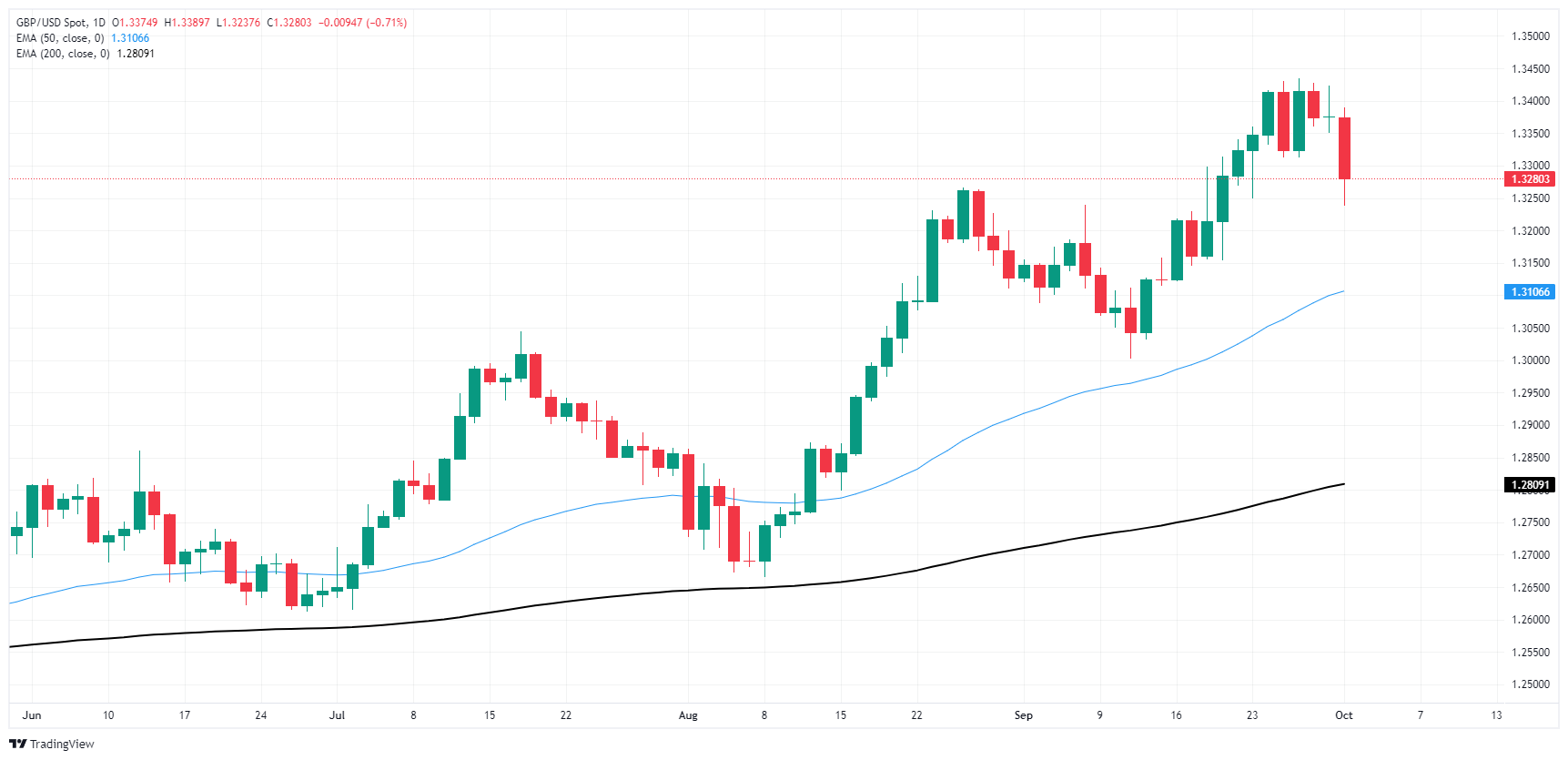The British Pound fell sharply against the U.S. Dollar on Tuesday, with GBP/USD dropping to its lowest level in over a week. The move came as weak U.S. economic data and escalating geopolitical tensions drove investors towards safer assets, bolstering the Greenback at the expense of riskier currencies like Sterling. The pair slipped below the 1.3300 mark, signaling a loss of momentum as global uncertainties weighed heavily on market sentiment.
Geopolitical concerns were a major catalyst, with reports emerging that Iran had launched a missile strike against Israel, following Israel’s recent incursion into Lebanon. The situation quickly intensified as the United States pledged support for Israel, raising the specter of a wider conflict in the Middle East. This escalation has driven a flight to safety, with investors pulling back from riskier plays, adding pressure on the Pound while boosting the U.S. Dollar.
Adding to the Pound's woes, the latest U.S. economic data failed to inspire confidence. September's ISM Manufacturing PMI remained unchanged at 47.2, falling short of expectations for a slight improvement to 47.5. The figure remains in contraction territory, reflecting ongoing challenges in the U.S. manufacturing sector. Additionally, the ISM Manufacturing Prices Paid index fell significantly to 48.3 from 54.0, indicating easing price pressures and suggesting weaker demand conditions.
Despite a surge in JOLTS Job Openings to 8.04 million in August—up from the prior month's revised 7.7 million—the labor market showed signs of underlying weakness. The ISM Manufacturing Employment Index dropped to 43.9, missing forecasts and reflecting continued difficulties in converting job postings into new hires. This disconnect highlights a labor market still struggling to gain robust momentum, contributing to the mixed economic outlook.
Looking ahead, Pound traders have little to focus on until the Bank of England's (BoE) Monetary Policy Report Hearings on Thursday, where any hints about future policy direction could impact sentiment. Meanwhile, the U.S. will release a series of minor economic indicators leading up to the crucial Nonfarm Payrolls (NFP) report on Friday. Investors are particularly cautious as data has consistently failed to meet expectations, raising questions about the strength of the U.S. economy.

Technically, the GBP/USD pair faces increasing downside pressure after falling below the 1.3300 handle. The next significant support lies near the 50-day Exponential Moving Average (EMA) at 1.3100, but the path lower is unlikely to be smooth, with traders eyeing the 1.3000 level as a key battleground should bearish momentum continue.
With geopolitical tensions escalating and economic data painting a lackluster picture, the British Pound finds itself on shaky ground. Investors are adopting a cautious stance, waiting for clearer signals from both the BoE and U.S. labor market data, which could provide the next major directional cues for the currency pair. For now, risk aversion and uncertainty are keeping Sterling under significant pressure.

















